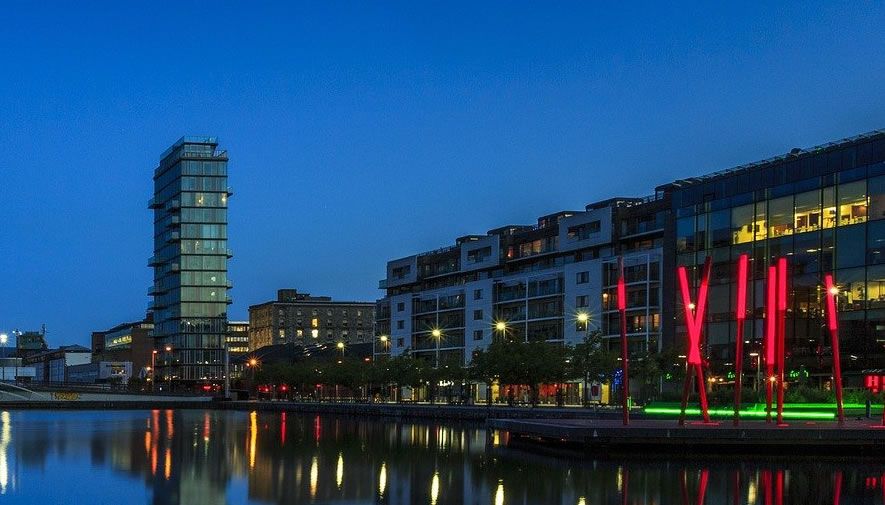A recent survey found that over 85% of cranes in Dublin, are involved in non-residential building works, the majority of which are offices and some hotels.
Even before this years pandemic, Dublin office building and valuations were moving into bubble terrority.
Yesterday evening while walking around Dublin 2 and 4, in a short square mile, there were a dozen building sites. All the sites we came across were actually building office blocks.
Only last week, a huge employer in Dublin ‘State Street’ announced it “will see fewer people working in its IFSC offices as is reconfigures its office footprint”. This comes after recent announcements from Google which pulled the plug on a new office building lease and Microsoft predicting a permanent office exodus and others and the general consensus is that most multinationals and in general most businesses, large and small, will be reducing their office requirements if not getting ride of their office altogether.
So with this in mind, how are we still building office space in Dublin?
The vast majority of professional employees want and expect reduced hours in the office and increased working from home opportunities. Most employers now seem to acknowledge this, led by multinational firms. For employers it makes sense reducing physical office space and for employees, it means less time commuting and more time with the family (if that is a good thing:).
Another questions to be asked is who is building the office space in Dublin and how much investors hold in commercial real estate debt via bonds, direct bank loans and securitised loan bundles. In the United States, investors hold $3.5 trillion in commercial real estate debt.
The US, may hold an idea of how Ireland will turn out in relation to commercial and residential read estate. In San Francisco, property prices are plummeting and rental asking prices are down 30%. Professionals in SF are moving to Arizona, Texas and Oregon, where property prices are nearly 50% less. Could we see a similar pattern in Ireland. Property and rental prices have never been higher in Dublin. Could we see a flow of workers from Dublin to counties in the midlands, south and west of the country, where prices are a fraction of Dublin.
WFH policies are creating ghost areas in dense office cities like San Francisco and New York. Bloomberg estimates 1.6M workers commute into Manhattan daily. Yet, downtown Manhattan has become a ghost town. Kastle Systems, a building security firm, provides weekly reports of key fob check-ins for 2,681 buildings in the U.S. New York City has an average occupancy rate of just 15.9%. Manhattan office space for rent is at the highest level since 2003.
Similarly in Dublin, office rents are expected to fall and vacancies rise as occupiers rethink their post Covid needs to reflect more working from home, and in some cases fewer staff.
In summary, maybe now is the time to reverse this needless office building, which isn’t required now or in the future and convert these office building into residential buildings. The future of Dublin is up. It will be more high rise living, so now we should cater for the demand for property in Dublin and convert unused office building and currently being-built office buildings into apartments.
When you consider it, residential property is probably the only market that is not catered for. As in demand is not catered for. All other industries are catered for, such as groceries, fashion, virtual offices, electricity, mobile phones, pharma, IT, estate agents. I can’t think of another industry that the market is not catered for or even flooded in some cases.
